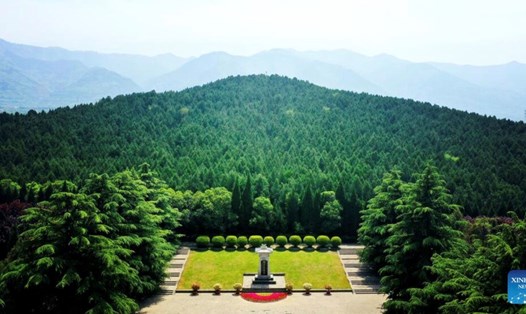Chinese archaeologists have recreated 6,000 armor scales excavated from the tomb of Liu Xia - the 9th emperor of the Han Dynasty (202 BC - 220 AD).
According to SCMP, about 6,000 multi-material armor scales were the first discovery of this armor from the Han Dynasty and are also the "smallest ever excavated" of this era.
The armor scales were excavated in Jiangxi Province, eastern China in the mausoleum of Emperor Liu He. This tomb was excavated about a decade ago.
The armor scales are made from a mixture of iron, copper and lacquered leather, the Institute of Cultural Relics and Archaeology of Giang Tay province shared with Xinhua.
According to Bai Rongjin - an experienced armor recovery expert at the Chinese Academy of Social Sciences (CASS), the multi-material, synthetic approach to making armor, in contrast to the common single-matter armor, is unprecedented in Han Dynasty archaeology.
Each scales of the armor are only 1 cm wide and 0.2 cm thick, the smallest armor scales ever excavated since the Han Dynasty, noted expert Bai Rongjin. Such small pieces of armor require more complex forging and assembly techniques.
Han-era armor scales are typically 4 cm to 10 cm wide. The elaborately crafted armor scales discovered in the ancient tomb of Liu Sheng - a prince of the Western Han Dynasty (202 BC - AD 9), are also 2 cm to 3 cm wide - much larger than the scales on the armor in the tomb of Emperor Liu He. The ancient tomb of Prince Liu Sheng was discovered in the north of Hebei Province in 1968
Emperor Liu He reigned for only 27 days in 74 BC. After that, he was demoted to the position of Marquis of Hai Hon. The tomb of Emperor Liu Xia near the capital of suong of Jiangxi Province is considered by Chinese archaeologists to be a treasure trove of many precious antiques.











